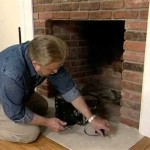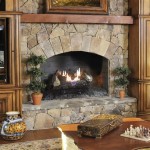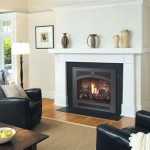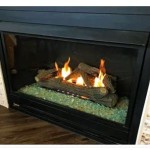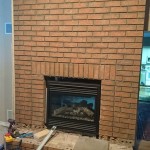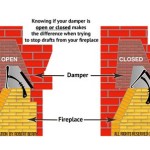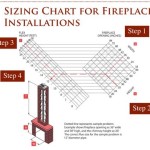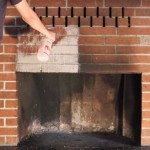Installing a Fireplace Insert: A Comprehensive Guide
Installing a fireplace insert is a significant home improvement project that can transform your living space and enhance its ambiance. Fireplace inserts are self-contained heating units that fit within an existing fireplace, offering increased efficiency and safety compared to traditional open fireplaces. This guide provides a comprehensive overview of the installation process, covering essential aspects to ensure a successful and safe project.
1. Planning and Preparation
Before embarking on the installation, meticulous planning and preparation are essential. This stage involves assessing your fireplace's compatibility with an insert, selecting the right model, and gathering necessary tools and materials.
Firstly, evaluate your fireplace's dimensions and ensure there is sufficient space for the insert. Measure the height, width, and depth of the fireplace opening to ensure the chosen insert fits snugly. Additionally, consider the existing chimney's size and condition, ensuring its suitability for the new insert's exhaust system.
Next, choose a fireplace insert that meets your heating requirements and design preferences. Consider factors such as heat output, fuel type (wood, gas, or electric), and aesthetic features like the firebox design and exterior finish. Consult with local fireplace specialists or manufacturers to obtain expert advice and determine the most appropriate insert for your needs.
Once the insert is selected, gather the necessary tools and materials, including:
- Safety glasses and gloves
- Level, tape measure, and marking tools
- Screwdriver, drill, and drill bits
- Wrench set
- Heat-resistant sealant
- Fireplace insert installation kit (provided by the manufacturer)
2. Installation Process
The installation process involves several steps, each requiring careful attention to detail and safety precautions:
Step 1: Prepare the Fireplace
Begin by thoroughly cleaning the fireplace, removing any debris, ash, or old firebox materials. Examine the existing firebox liner for any cracks or damage, and replace or repair as needed. This ensures a clean and safe environment for installing the insert.
Step 2: Install the Insert
Position the insert within the fireplace opening, ensuring a snug fit. Use the provided mounting brackets and hardware to secure the insert to the fireplace hearth or mantel. Refer to the manufacturer's instructions for specific guidance on the installation process.
Step 3: Connect the Exhaust System
Connect the insert's exhaust pipe to the existing chimney. Ensure a secure and leak-free connection, using heat-resistant sealant to prevent any potential leakage. Some inserts require an additional vent pipe extension to reach the chimney, which may need to be installed separately.
Step 4: Connect the Air Intake
Connect the air intake to the insert, providing fresh air for combustion. The air intake may be located on the exterior wall or within the fireplace opening. Follow the manufacturer's instructions for proper installation and ensure a secure connection.
Step 5: Test the System
Once the installation is complete, carefully test the insert's operation. Turn on the insert and check for any leaks, uneven burning, or unusual noises. Inspect the exhaust system and the air intake for proper ventilation and ensure that all components are functioning correctly.
3. Safety Considerations
Installing a fireplace insert requires careful consideration of safety aspects to ensure a secure and enjoyable experience. Here are essential guidelines to adhere to:
1. Fire Safety
Ensure all fire codes and regulations are adhered to during the installation process. Avoid creating any potential obstructions in the chimney or the surrounding area. Inspect the insert's components regularly for wear and tear and replace them as needed.
2. Electrical Safety
If the insert uses electricity, ensure the electrical wiring is properly installed and meets local electrical codes. Inspect the wiring and electrical components regularly to prevent fire hazards.
3. Carbon Monoxide Safety
Install a carbon monoxide detector in the vicinity of the fireplace. Ensure proper ventilation to prevent the buildup of harmful carbon monoxide within the home.
4. Professional Assistance
Consider seeking professional assistance from a qualified fireplace installer, especially if the installation involves complex tasks like chimney modification or electrical wiring. Professionals can ensure a safe and efficient installation, minimizing potential risks and maximizing the benefits of a fireplace insert.
By following these guidelines, you can confidently install a fireplace insert and enjoy the warmth and beauty it brings to your home. Remember to always prioritize safety and consult professional advice when needed.

How To Install A Fireplace Insert Diy Save Money

Custom Installation Of Fireplace Inserts Insert Installations Sierra Hearth And Home
Wood Stoves And Fireplaces How To Install A Burning Fireplace Insert Hearth Com Forums Home

Best Fireplace Insert Repair Installs Ton Service

Fireplace Insert Installation Step By Forbes Home
How To Install An Electric Fireplace Insert

Wood Fireplace Insert Installation Overview By Rockford Chimney Supply

Convert To Gas Installing Fireplace Inserts Doctor Flue

ᑕ❶ᑐ How To Install An Electric Fireplace Insert Magikflame Blog

Lodi Wi Installing Fireplace Insert Remodel
Related Posts

